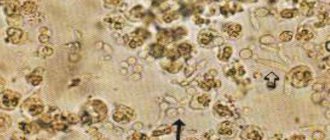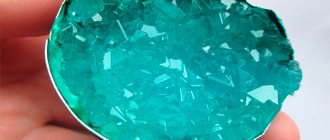Finding blood in the urine of children is a serious reason to go to the hospital for a consultation with doctors specializing in pediatrics and urology. As a rule, parents immediately go to medical institutions for help. Any deviation from the norm in the child’s condition is a threat of the occurrence of some disease, perhaps a serious one.
Let's talk about the main reasons for this phenomenon in children of different age categories. We will focus separately on newborns, infants and grown-ups. It is necessary to start the article with the norms of blood and urine tests in children. Based on these indicators, doctors can diagnose many health problems.
Causes of blood in a child's urine
If there are traces of blood in a child’s urine, then it is likely that he has problems with the kidneys, but in some cases other reasons can also provoke this phenomenon. Thus, blood can be detected in the urine of young children in the following cases:
- kidney dysfunction;
- pathologies of the urinary tract transmitted by heredity;
- damage to the glomeruli of the kidneys;
- infection in the urinary system;
- malignant formations;
- urinary tract damage;
- stone formation and salts in the bladder, kidneys;
- bleeding disorders;
- renal vein thrombosis;
- decreased immune system due to colds and viral infections.
In a newborn
The appearance of blood in a child’s urine requires increased attention from parents.
If a young mother sees a change in the shade of her baby’s urinary fluid, then there is no need to panic right away; perhaps its redness is within normal limits and indicates a high urate content. However, such a reaction of urine when salts penetrate it is not a pathology if it occurs in the first days of the baby’s life. This condition is called uric acid infarction and is not classified as a disease. But, in addition, urination with blood in newborn boys and girls occurs when the baby’s urinary tract is infected, congenital renal pathologies and injuries that occur during childbirth. In this case, additional examination and treatment is required.
In a baby
What can blood in a baby’s urine indicate? In children under one year old, the blood vessels are still quite fragile and therefore all kinds of health problems can provoke their damage. Hematuria in children of the first year of life can occur even with a cold, which is accompanied by an increase in body temperature, as well as with severe physical exertion. Often, when a one-year-old child urinates, blood appears in the urine due to improper care. Then a urinary tract infection develops and urethritis and cystitis appear. In addition, hematuria in infancy may indicate congenital pathological changes, kidney diseases, which are characterized by damage to the glomeruli.
In an older child
The most common cause of blood in the urine is kidney disease.
What does a change in urine mean in older children, and is this normal?
In most cases, an admixture of blood in the urine of adult children indicates diseases of the urinary tract and kidneys. Blood in the urine of a teenager is often a symptom of urolithiasis, when stones damage the mucous membrane of the bladder and provoke bleeding. In older children, hematuria is also possible due to injury to the urinary tract.
Associated symptoms
The appearance of blood in the urine of children is accompanied by other signs. Additional symptoms are as follows:
- pain during urination;
- burning, itching and discomfort in the urethra;
- urinary incontinence;
- frequent attacks of headache;
- puffiness and swelling of the face;
- increased body temperature;
- pain in the lower back.
Such symptoms may indicate the presence of various pathologies of the urinary system in a child.
Any symptom is a signal from the body that any organ, department or entire system is damaged. To find out why bloody urine occurs in children, you need to rule out certain diseases. Make sure that your child undergoes timely diagnosis, check with doctors about the cause of hematuria and how to quickly and effectively improve the baby’s condition.
A list of diseases and other reasons for which bloody urine occurs in children.
- Hereditary kidney diseases, as well as genetic predisposition to kidney diseases. According to statistics, about thirty percent of kidney diseases in children are hereditary.
- Diseases of a general infectious nature.
- Incorrect parental care for the child’s genitals, which began in infancy.
Often, hematuria occurs in representatives of the younger generation due to certain actions of the patient himself - that is, the child. If we are talking about an infant, then being in infancy and playing with small objects, the baby, having insufficiently refined motor skills, can independently damage his urethra. As a result, the urine turns pink due to the existing injury.
In girls with cystitis, in addition to blood in the urine, there is a burning sensation and pain at the time of urination. Girls have a different structure of the urethra from boys, so this very common infectious disease that causes hematuria is easier to recognize in them.
In addition to the presence of blood in biological fluid, children sometimes experience additional symptoms:
- Pain syndrome when urinating. Develops during inflammatory processes that are localized in the bladder.
- Increased body temperature, pain in the lumbar area. The presence of leukocytes in the urine is also noted, which indicates an inflammatory kidney disease.
- Pain in the kidneys, which radiates to the lower abdomen, legs and groin area. Most often they are signs of kidney stones.
- Swelling and increased blood pressure indicate glomerulonephritis.
With the development of various diseases of the urinary organs, in addition to blood, a large number of symptoms may be present in the urine - clear signs of a certain pathology. Parents should be able to recognize such changes in the child’s condition in order to seek medical help in time.
Glomerulonephritis is an inflammatory process of an infectious-allergic nature that affects the renal glomeruli. In the absence of proper treatment, the disease quickly becomes chronic. It often begins with a decrease in the volume of urine excreted, followed by fever, headache, lethargy, weakness and swelling of the face.
Pyelonephritis is an inflammation of the pyelocaliceal apparatus of the kidneys. It is characterized by pain in the lower back (most often unilateral) or in the navel area. There are temperature fluctuations and chills. Pain appears when urinating, small children cry and refuse to empty their bladder, older children experience urinary incontinence and frequent painful urges.
Cystitis is a disease mainly characteristic of girls, but with phimosis (narrowing of the foreskin), boys also often develop urethritis and cystitis. The disease causes constant nagging pain above the pubis, severe pain when urinating, urinary incontinence and general malaise.
True urolithiasis in children is diagnosed extremely rarely; metabolic changes are more often observed, in which the levels of salts in the urine are increased. Such deviations can become a provoking factor for the formation of stones at a later age. Therefore, parents should provide their child with an appropriate diet that can minimize the intake of large amounts of salts into the body.
Additional symptoms
A change in the shade of urine is a sign of various pathologies, which, in addition to hematuria, are also accompanied by the following symptoms:
- With inflammation of the bladder (cystitis), in addition to red blood cells in the urinary fluid, the baby may be bothered by sharp pain when emptying through the urethra.
- With infectious-inflammatory kidney disease (pyelonephritis), a small patient may experience a strong increase in body temperature, pain in the lumbar region, and the presence of leukocytes in the urinary fluid.
- If a baby is diagnosed with urolithiasis, then in addition to blood in the urine, severe pain appears in the lumbar region.
- In kidney pathology, characterized by damage to the renal glomeruli, hematuria is accompanied by swelling and high blood pressure.
Hematuria in children
Leave a comment 9,060
Why is there blood in a child's urine? In medical parlance, the presence of red blood cells in urine is called hematuria. There are many reasons for the appearance of this phenomenon, they can be both serious and safe for the baby’s life. Only a specialized specialist can determine the degree of danger of the pathology, so if you find the first signs of hematuria in either a boy or a girl, you should go to a medical facility and undergo the necessary diagnostic examination.
When should you not worry?
Intense physical activity can cause blood in the urine.
Urine fluid with bloody discharge is considered normal in the following cases:
- If a catheter is placed in the baby’s urethra, then traces of blood are acceptable for another 2-3 days after it is removed.
- If the child was engaged in increased physical activity before submitting biological material for laboratory testing.
- During a diagnostic examination using an endoscope, bleeding is possible immediately on the day of the procedure and a couple of days after it.
- If the baby had stones crushed or removed from the kidneys.
Blood in the urine in children and adolescents is an alarming sign that should alert parents. In rare situations, hematuria can be normal, but more often it is a consequence of various ailments. The earlier possible diseases are diagnosed, the higher the likelihood of successful treatment.
Norms of indicators for analyzes
The level of red blood cells in urine varies for each age and gender.
After the birth of a child, the body undergoes restructuring and adaptation to new conditions. In this case, the red blood cells accumulated during prenatal development are destroyed and others are formed. With this process, red blood cells may appear in an amount of up to 7 cells in the field of view. How long this process will last depends on the child’s immunity.
In children over two years of age, if there is no history of diseases of the urinary system, the content of red blood cells in urine should be as follows:
- for boys up to 1;
- for girls up to 3.
An increased concentration indicates a deviation from the norm.
The appearance of blood in a child’s urine is considered safe in the following cases:
- after using a catheter in the urethra, bleeding is possible after 2-3 days;
- when the child experienced heavy physical activity before taking the test;
- when using an endoscope to diagnose a disease, blood may be present in the urine for two days;
- after removing or crushing stones.
It is very important to correctly collect urine for testing. If hygiene is not observed before donating biological fluid, the result may be false. If there is an inflammatory process in the intestines, the contained red blood cells end up in a container for collecting urine.
Girls should not give urine before the start of menstruation and a week after the end. Bloody cells can appear due to hormonal disorders, as well as pathologies of the appendages.
What should a normal urine and blood test show in children? Let's start with the fact that only an experienced specialist should decipher the tests. OAM primarily helps diagnose problems with the kidneys and urinary tract. The color should be from light yellow to golden straw, no impurities should normally be present (the urine is clear). The following is a table of norms for OAM (general urinalysis) indicators.
| Index | Norm |
| Specific gravity | (g/l) Up to 2 years – up to 1015; Up to 3 years – up to 1016; Older - up to 1025. |
| pH | From 4.5 to 8. |
| Leukocytes | The norm for girls is up to 6; The norm for boys is up to 3. |
| Red blood cells | Newborns – up to 7; Older - up to 3. |
| Epithelial cells | To 10. |
| Mucus and protein | Absent or in small quantities. Protein up to 0.03 g/l. |
| Glucose | Absent. |
| Ketone bodies, casts, bilirubin, bacteria | None. |
Normally there should be no blood admixture. Below is a table of UAC norms.
| Hemoglobin | 100–240 |
| Red blood cells | 2,7–6,6 |
| Color index | 0,75–1,15 |
| Reticulocytes | 0,3–15 |
| Leukocytes | 4,5–24,5 |
| Rod | 0,5–17 |
| Segmented | 16–80 |
| Eosinophils | 1–7 |
| Basophils | 0–1 |
| Lymphocytes | 15–70 |
| Platelets | 160–490 |
| ESR | 2–12 |
Please note that only an experienced specialist with a higher medical education can decipher the analysis accurately. The table with blood norms, which is given above, does not differ by age (for example, the norm for a newborn child for some indicator may differ significantly from the norm for the same indicator for a child at the age of three). So the results are individual in each case.
There are some cases where blood in the urine is normal in children. These include a catheter inserted into the urethra. In this case, blood may be present for several days after its removal. After the cystoscopy procedure or crushing (removal) of kidney stones, spotting may appear on this day and several days after. If the child had serious physical activity on the eve of the urine test, this may also cause the presence of blood.
Types of hematuria
Depending on the causes of hematuria, it happens:
Physiological hematuria is characterized by isolated episodes of blood in the urine. Chronic physiological hematuria is rare.
Pathological hematuria is mainly of a recurrent (repeating) nature.
Depending on the severity, hematuria is divided into types:
Hematuria can occur in different ways:
- be accompanied by additional symptoms;
- have no accompanying symptoms.
If blood in the urine is the only symptom, then hematuria is called isolated.
What should parents do?
The first thing parents need to do if there is blood in their child’s urine is to find a knowledgeable doctor and go to see him. But even before visiting the clinic, you can take some measures yourself. Analyze what was eaten or drunk by the child, whether there were any dyes, antibiotics, or multivitamins. Determine exactly whether he experiences pain when urinating. Have you been hit, have there been any falls, blows, heavy lifting, or excessive loads?
Hematuria caused by injury will disappear on its own after some time. You just need to limit your child from physical activity. There will be no consequences after eating a red product or a drug that changes color. When the coloring components leave the body, the urine will acquire a standard shade. If parents are concerned about the color of urine, you can give the child a lot of water to help the body cleanse itself faster.
In the case where this disease manifests itself, self-medication and making one’s own decisions can have disastrous consequences. The doctor will prescribe the necessary tests, a course of treatment for the child, and everything that he considers necessary.
One must adhere to his instructions, even if some seem inappropriate and unnecessary, fulfilling them unquestioningly. After all, the health of the child depends on it.
In order to choose the most effective method of treatment for hematuria in children, you need to consult a specialist. Parents should pay close attention to the nutrition of their children - it is quite possible that the appearance of red drops in the urine is associated with poor diet or consumption of certain foods containing red pigment.
Such products include blueberries and other berries, beets, and dishes with dyes and preservatives.
Hematuria in children is treated in various ways, depending on the cause of the disease. If the appearance of blood was noted after physical activity, parents can adjust their child’s lifestyle.
In some cases, the development of childhood hematuria is caused by the use of certain medications. To normalize the color of urine, it is enough to stop taking medications or replace them with analogues.
Basic rules of behavior for parents if a child has hematuria:
- the baby should drink at least 0.5-0.7 liters of clean drinking water throughout the day;
- parents need to strictly monitor the child’s physical activity;
- If any unpleasant symptoms appear, you should definitely seek qualified medical help, since only a doctor will be able to determine the exact cause of the disease and prescribe the most effective treatment.
Severe infectious lesions of the urinary system are treated with antibacterial drugs. If hematuria appears due to serious injuries or damage to internal organs, the small patient may require surgical intervention.
In the presence of glomerulonephritis, the patient must follow a special diet, and treatment is carried out using medications from the group of cytostatics and hormones.
Blood in urine in children can be a normal physiological phenomenon or indicate serious pathological processes in the growing body. Timely and properly selected treatment allows you to solve this problem, and the color of urine returns to normal.
Of course, the most important thing to do is to show the child to a good specialist. However, even before visiting a doctor, you can independently draw some conclusions and take some measures:
- Remember what the child ate and drank. Were there any dyes, bright red vegetables and fruits, antibiotics, or vitamins among these products?
- Does the child experience pain when urinating blood?
- Have there been any falls, significant physical activity, sprains, or injuries?
If blood in the urine appears after a minor injury, then such hematuria most often goes away on its own within a couple of days. Naturally, in such cases it is necessary to ensure that physical activity is reduced.
Changing the color of urine as a reaction to food or drink has no consequences. When the substances are completely out of the body, the urine will return to its original color. Make sure your child drinks more fluids than usual. You will need to drink about 500 ml of water per day.
Be sure to follow your doctor’s instructions and take the time to take all the necessary tests, even if some of them seem unnecessary to you. It is better to be safe and breathe a sigh of relief than to discover an advanced disease later.
Prerequisites for the appearance of pathological hematuria
Most often, pathological hematuria is diagnosed in children and adolescents, which indicates a malfunction in the functioning of various body systems.
Diseases of the urinary system are the main provoking factor
In children and adolescents, hematuria is most often caused by diseases of the urinary system:
- kidney;
- ureter;
- Bladder;
- urethra.
Provoking pathologies include:
- urolithiasis, in which stones form in the kidneys. Stones can become lodged in the renal pelvis or ureter, disrupting the normal flow of urine.
Because of this, stagnation of urine forms in the kidneys, an inflammatory process occurs, which leads to hematuria. According to statistics, hematuria in children in 20% of cases is a consequence of urolithiasis;Stones can become lodged in the pelvis or ureter and cause stagnation of urine in the kidney
- pyelonephritis - infection of the renal tubules. Bacteria enter the kidney through the bloodstream from other organs or ascending along the wall or lumen of the ureter. In an advanced situation, pyelonephritis can lead to the formation of a kidney abscess (a cavity filled with purulent contents), which is also characterized by the formation of hematuria;
- hydronephrosis is a narrowing of the ureteropelvic segment that disrupts the normal movement of urine.
As a result, excess urine accumulates in the collecting system (the part of the kidney intended for temporary storage of urine), the organ enlarges; Hydronephrosis of the kidney is characterized by obstruction of the ureteropelvic segment - glomerulonephritis is inflammation of the kidney glomeruli. Glomerulonephritis is an autoimmune disease in which the body perceives its own body cells as “enemy” and kills them;
- cystitis is an infectious process affecting the walls of the bladder. In most cases, the disease is caused by E. coli, which can enter the bladder through the ureter from the kidney, ascending from the urethra, as well as through the blood or lymph flow from other organs;
- urethritis - inflammation of the urethra. The most common cause of urethritis in children is failure to comply with personal hygiene rules;
- cysts are benign tumors that can be localized in the kidney, ureter, urethra, bladder;
- malignant formations;
Malignant tumors in the kidney can cause hematuria - drug interstitial nephritis - kidney damage as a result of taking medications. Most often, the disease occurs due to the illiterate use of antibiotics, non-steroidal anti-inflammatory drugs, and diuretics. Pathology can also be caused by the abuse of potent medicinal herbs;
- renal tuberculosis - damage by tuberculosis bacteria to the renal parenchyma (tissue filling the organ);
- renal infarction - formation of a blood clot in a renal vessel. As a result, necrosis of surrounding tissues may develop;
- injuries to the urethra, ureter or kidney as a result of falls, car accidents, or surgery.
Common causes of hematuria in newborns and infants
In newborns, hematuria most often develops as a result of congenital anomalies of the urinary system, which cause stagnation of urine in the kidney. Such pathologies include:
In infants, the most common cause of hematuria is pyelonephritis.
The immunity of young children is in the formative stage, so various infectious diseases are often diagnosed in infants:
- stomatitis;
- laryngitis;
- bronchitis;
- otitis.
If not treated properly, pathogenic organisms can enter the kidney through the bloodstream and cause pyelonephritis.
Features of the appearance of hematuria in girls and young women
Girls and young women have an increased risk of hematuria. This is due to the fact that the female urethra is shorter than the male urethra, which means it is easier for pathogenic organisms to penetrate the bladder and kidneys.
The female urethra is shorter than the male urethra, which contributes to faster penetration of bacteria into the organs of the urinary system
As a result, diseases such as cystitis, pyelonephritis, and kidney abscess are diagnosed in girls and young women much more often than in boys and young men.
Prostatitis is a common cause of hematuria in teenage boys
In teenage boys, a common cause of hematuria is prostatitis.
With the disease, the prostate gland becomes inflamed and increases in size. This can lead to compression of the urethra and disruption of urine flow.
An enlarged prostate gland can lead to urinary problems
Causes of prostatitis:
- overweight;
- early abuse of alcoholic beverages, which impairs blood supply to the genital organs;
- sedentary lifestyle;
- hypothermia;
- venereal diseases;
- foci of chronic infection in the body.
Half a century ago, prostatitis was mainly diagnosed in men over 40 years of age. However, recently the disease has become significantly “younger” and is increasingly being detected in adolescence.
Other causes of hematuria
Hematuria in children and adolescents can also be a consequence of the following ailments:
- leukemia - a malignant disease of the hematopoietic system;
- hemophilia is a genetic pathology in which blood clotting is impaired. The disease is accompanied by hemorrhage in the joints and internal organs;
- sepsis, in which an infection from an affected organ spreads hematogenously (through the bloodstream) throughout the body;
- arterial hypertension - chronic increase in blood pressure.
What diseases can be accompanied by the appearance of blood?
In the normal state of the body, blood should not appear in urine. Coloring of a child’s urine or the appearance of clots in it occurs due to certain disturbances in the functioning of the functional systems of the body.
Sometimes these phenomena are temporary, appearing once, and quickly pass on their own. However, the appearance of traces and blood clots in urine may indicate the following diseases:
- kidney diseases (pyelonephritis, renal failure, nephritis, pathologies of the pelvis, glomerulonephritis);
- infection and inflammation of the genitourinary system (cystitis, urethritis);
- urolithiasis disease;
- oncology;
- tuberculosis;
- poor blood clotting;
- increased blood pressure;
- vasculitis;
- connective tissue dysplasia (more details in the article:);
- phlegmon and sepsis;
- pneumonia;
- gout;
- diabetes;
- congenital pathologies of the hematopoietic system and heart.
The child will need to undergo a full medical examination, since there are many diseases that cause hematuria
Symptoms
With hematuria in children and adolescents, the following additional signs may be observed:
- pain in the abdomen, lower back, groin;
- increase in body temperature to various values;
- decrease or increase in daily diuresis (the amount of urine excreted by the kidneys in 24 hours);
- bed-wetting;
- signs of intoxication of the body - nausea, diarrhea;
- headache;
- swelling on the face and body;
- unpleasant smell of urine;
- pale and dry skin;
- lack of appetite;
- high blood pressure;
- dyspnea;
- exercise intolerance.
In infants, hematuria may be accompanied by the following symptoms:
- frequent regurgitation;
- prolonged crying;
- chaotic movements of arms and legs;
- breast refusal;
- slow weight gain.
Also, children and adolescents may exhibit threatening signs that require immediate hospitalization of the child;
- vomit;
- shaking chills - a condition when a person’s arms and legs shake violently, and their teeth chatter. This symptom occurs with pyelonephritis, kidney abscess;
- body temperature 38 degrees or higher;
- unbearable pain in the stomach or back, during which a person cannot sit still and rushes around the room. Symptoms are characteristic of renal colic, which occurs when a kidney stone enters the ureter;
- lack of urination. May develop with renal colic, an advanced form of hydronephrosis;
- subcutaneous hemorrhages. In this case, small dots are formed on the skin, resembling stars in shape. This symptom is a feature of leukemia;
- prolonged bleeding resulting from minor cuts or abrasions. Such signs may indicate hemophilia.
If you have dangerous symptoms, immediately seek medical help, because in such a situation we can talk not only about the health, but also about the life of the child.
Danger of isolated hematuria
Although there are no additional symptoms with isolated hematuria, this does not mean that the condition does not pose a threat to the child. Associated symptoms may not be observed in the following pathologies:
- kidney cyst;
- initial stage of urolithiasis;
- glomerulonephritis;
- cancer of the urinary system.
Malignant tumors of the urinary system account for more than 5% of cases of hematuria detected in childhood and adolescence.
Diagnostic measures
If you find blood in your child's urine, first contact your pediatrician. In the future, you may need to consult other specialists:
- urologist;
- nephrologist;
- gynecologist;
- oncologist.
The main element of diagnosing hematuria is laboratory research methods:
- general urine analysis. Examination of sediment of biological material under a microscope allows one to determine the level of leukocytes, erythrocytes, and epithelial cells. With hematuria, the level of red blood cells will certainly be elevated.
During inflammatory processes in the urinary system, the number of leukocytes will also increase; - urine test according to Nechiporenko. The diagnostic method clarifies the severity of hematuria, provides information on the content of leukocytes, erythrocytes and casts in 1 ml of urine;
- urine analysis according to Zimnitsky. It is carried out to assess the excretory capacity of the kidneys. Biological material is collected within 24 hours. Urination is performed every 3 hours in a separate container;
- Urine examination using the Amburger method. The analysis shows how many red blood cells and white blood cells are excreted in the urine in 1 minute;
- biochemical urine analysis. It is carried out if inflammatory pathologies of the urinary system are suspected. During the study, the type of pathogenic microbes is determined, as well as the resistance of microorganisms to certain antibiotics;
- general blood analysis. Necessary for determining the level of leukocytes, erythrocytes, platelets in the blood;
- blood biochemistry. The parameters studied were glucose, cholesterol, creatinine, urea.
Laboratory research methods are the basis for diagnosing hematuria in children and adolescents
Instrumental research methods are also used to help clarify the diagnosis:
Differential diagnosis
When making a diagnosis, the specialist considers the possibility of false hematuria in the patient.
So, urine can change its color as a result of the child consuming certain foods or medications:
- red color of urine may appear due to taking Aspirin, Amidopyrine;
- a pink tint to urine can be the result of consuming large amounts of acetylsalicylic acid, as well as carrots and beets;
- Phenol and activated carbon can turn urine brown.
The doctor should also rule out:
- hematuria of genital origin. For example, this type of hematuria can be observed in girls during menstruation or for 3-4 days after the end of bleeding. In such a situation, blood enters the urine from the vagina;
- blood in urine of rectal origin. With hemorrhoids or damage to the anal fissure, bleeding may occur, due to which blood enters the urine.
What to do?
The first thing that is important for parents who notice blood in their child’s urine is to make sure that the urine actually contains blood cells. First, you need to remember whether the child the day before ate any foods with red pigments (beets, blueberries, sweets, etc.), and also whether he started taking any new medications. If this is the case, make sure your child drinks enough and very soon the urine will turn yellow again.
If no connection with medications or products is found, you should go to the doctor. The specialist will prescribe a urine test, as well as a blood test of the child, which will identify the cause of the problem and begin eliminating it in a timely manner.
Treatment of diseases should only be carried out under the supervision of a competent physician
Treatment
Hematuria in medicine is not considered a separate disease, and therefore does not have the same treatment regimen for all patients. Therapy is aimed at eliminating the causes that caused the appearance of blood in the urine.
Drug therapy
For diseases of the urinary system, the following medications can be prescribed to children and adolescents:
The use of probiotics increases the child’s body’s defenses, because about 70% of human immunomodulatory cells are found in the gastrointestinal tract.
The following drugs are used to treat prostatitis in adolescents:
- antibiotics (Doxycycline-Ferein, Erythromycin), which destroy bacterial infection in the prostate gland;
- non-steroidal anti-inflammatory drugs (Naproxen, Diclofenac). Medicines relieve swelling, eliminate pain, reduce temperature, and reduce inflammation;
- alpha-blockers (Tamsulosin, Sonizin). Medicines eliminate spasms of the smooth muscles of the prostate gland and bladder neck, which facilitates the outflow of urine.
For pathologies of the hematopoietic system, the following medications are prescribed:
- agents with antitumor effects (Cytarabine, Rubidomycin). Used for leukemia;
- iron-containing preparations (Maltofer, Hemofer). Used for hemophilia.
Surgical intervention
Surgical intervention for the treatment of hematuria is used in the following situations:
- for prostatitis, if medications do not help. Partial or complete removal of the prostate gland is performed. The operation can be performed either open or closed using a resectoscope - a metal tube. During resectoscopy, the instrument is inserted through the urethra. The affected part of the prostate gland is excised using high-frequency alternating current;
- if a kidney stone is stuck in the ureter and causes stagnation of urine in the kidney. The ureter is dissected above the area where the stone is located, and the stone is removed;
- with kidney abscess. The renal capsule is incised, the abscess is opened and cleared of pus. The kidney is drained to drain the remaining purulent contents;
- if malignant tumors are diagnosed in the organs of the urinary system. Tumors are removed along with adjacent tissues that may contain metastases. After the operation, chemotherapy sessions are carried out;
- with hydronephrosis, when medications fail to restore the outflow of urine from the kidney. The narrowed ureteropelvic segment is removed, and the remaining parts of the ureter and pelvis are sutured. In this way, a new ureteropelvic orifice is formed, through which urine will flow;
- for leukemia, if a bone marrow transplant is required. Biological material is collected from a donor with healthy bone marrow.
Diet therapy
Dietary nutrition is an auxiliary method of treating pathologies that cause hematuria. A separate treatment table is used for each group of diseases.
For example, for diseases of the urinary system, diet No. 7 is prescribed. Basic principles:
- the consumption of salt, protein, and fats is reduced;
- Spicy, pickled, smoked foods, as well as alcoholic and carbonated drinks are removed from the menu;
- products are boiled and baked. Fried food is prohibited;
- the diet increases the content of fresh vegetables and fruits, whole grain cereals, wholemeal bread products;
- It is recommended to drink green tea, chicory drink, herbal decoctions and infusions as drinks;
- soups based on fatty meat and fish broths are replaced with vegetable ones.
Photo gallery: healthy foods for kidney diseases
Vegetables contain fiber, which helps cleanse the body of toxins. Fruits contain useful vitamins and minerals. Boiled lean meat is a useful product for kidney disease. Green tea enhances the excretory ability of the kidneys. Vegetable soup is a healthy alternative to fatty, rich broths. For kidney pathologies, give preference to whole grains. grains
Treatment of pathology
After the diagnosis has been carried out and the diagnosis has been made, the small patient is prescribed an appropriate therapeutic course. If hematuria is caused by increased sports loads, then the baby does not require special treatment; it is enough to reduce the intensity of activities and the blood from the child’s urinary fluid will disappear on its own in 3-4 days. If during the examination the baby is found to have infectious lesions, then an antibiotic will be needed to eliminate them. In the case of hematuria in a child resulting from stone formation, stone removal by an experienced specialist will be required to reduce the number of red blood cells in the baby’s urine. After their removal, the child’s condition will quickly return to normal. To treat blood in urine that occurs in small patients with glomerulonephritis, hormonal drugs and a therapeutic diet are prescribed, which excludes the consumption of fatty, fried, salted and peppered foods.
Prognosis for treatment of hematuria and possible consequences
The result of treatment of hematuria in children and adolescents depends on the following circumstances:
- reasons that caused blood in the urine. The greatest danger to a child is posed by diseases such as hemophilia, leukemia, malignant tumors of the urinary system, and kidney abscess. These pathologies are difficult to treat and predicting their outcome is problematic;
- timeliness of started treatment. Any disease at an early stage of development is easier to treat than in an advanced state.
A common consequence of recurrent hematuria is anemia, which is characterized by a decrease in the level of hemoglobin in the blood.
Hematuria due to pathologies
Traces of blood in a child's urine may be the result of injury. When falling, blows to the abdominal area, lumbar bruises, or sports injuries, blood flow in the parenchyma is disrupted, which leads to gross hematuria. When the kidneys and ureters rupture, profuse internal bleeding occurs, requiring immediate hospitalization.
Hematuria in children most often develops as a result of disorders of the urinary organs:
- Inflammatory. Diseases of the pelvis, parenchyma, cystitis and urethritis.
- Non-inflammatory. ICD, oncology, developmental anomalies, hydronephrosis.
In children, blood in the urine can be a consequence of the following diseases:
- infectious (flu, meningitis, scarlet fever, typhus);
- formations of suppuration with phlegmon;
- pneumonia and sepsis;
- congenital pathologies associated with impaired hematopoietic function, modification of blood cells, insufficient coagulation, hemophilia;
- heart defects.
Prevention
Successful prevention in children and adolescents includes the following aspects:
- strengthening the immune system through physical activity, proper nutrition, and hardening;
- undergoing regular medical examinations;
- competent use of medicines in the treatment of various diseases;
- timely treatment of inflammatory processes in the body.
The outcome of treatment for hematuria in children largely depends on the correct actions of the parents: at the first sign of blood in the child’s urine, you should immediately consult a specialist for medical help.
Hematuria is the medical term for the presence of blood in the urine. Blood in urine can come from the kidneys (where urine is produced) or from anywhere in the urinary tract. The urinary canal includes the ureters (tubes from the kidneys to the bladder), the bladder (where urine is stored), and the urethra (tube from the bladder to the outside of the body).
Although seeing red blood cells in a urine test is usually very scary for parents, most of the time hematuria in children is not life-threatening.
Remember that you don’t joke with your child’s health, so if you find any abnormalities, be sure to seek help from a doctor. The reasons may be different:
- Various infections of the urinary system.
- Kidney stones.
- Irritation of the urethra, the small opening from which urine is released.
- Trauma (for example, after a bicycle fall and kidney bruises).
- Vigorous exercise.
- Kidney diseases.
Rarely, blood may appear in the urine due to any diseases that are inherited. A serious disease such as bladder or kidney cancer is rare in children.
Urine may be brightly colored due to special enzymes found in certain foods. This can be seen when children eat excess amounts of beets, food dyes, or take medications. Even highly concentrated urine can sometimes be confused with cola-colored urine.
Treatment and specialists
Only a qualified specialist should treat bloody urine in children. Only a doctor can tell you how to treat hematuria in a child, how to get rid of complications from urine with blood and prevent its occurrence in the baby in the future. The following doctors can answer the question of what to do if your child has hematuria:
- neonatologist,
- pediatrician,
- nephrologist,
- urologist.
Treatment of hematuria in children directly depends on what caused the appearance of blood in the child’s urine. However, the fact remains: blood in the urine is a symptom that does not allow for compromise. Treatment of infectious diseases that cause hematuria involves the use of antibiotics. Be that as it may, it is impossible to do without medical assistance (at least advisory) in this case.
Arm yourself with knowledge and read a useful informative article about bloody urine disease in children. After all, being parents means studying everything that will help maintain a degree of health in the family on the island.
Find out what can cause the disease and how to recognize it in a timely manner. Find information about the signs that can help you identify illness. And what tests will help identify the disease and make a correct diagnosis.
In the article you will read everything about methods of treating a disease such as bloody urine in children. Find out what effective first aid should be. How to treat: choose medications or traditional methods?
You will also learn how untimely treatment of bloody urine disease can be dangerous in children, and why it is so important to avoid the consequences. All about how to prevent bloody urine in children and prevent complications.
And caring parents will find on the service pages complete information about the symptoms of bloody urine disease in children. How do the signs of the disease in children aged 1, 2 and 3 differ from the manifestations of the disease in children aged 4, 5, 6 and 7? What is the best way to treat bloody urine disease in children?
Take care of the health of your loved ones and stay in good shape!
Also watching
The discovery of bloody discharge in a child’s urine will alert any parent. Therefore, at the first signs of hematuria, as this phenomenon is called in medical language, you should immediately contact a medical institution for advice and treatment. Hematuria in children may indicate the presence of serious pathologies of the kidneys, urinary tract, problems with hematopoiesis, and injuries to internal organs.
The appearance of hematuria in children is influenced by many factors:
- Infectious processes in the urinary system;
- Crystalluria;
- Exchange nephropathy;
- Metabolic nephropathies;
- Overdose of drugs, herbs, dietary supplements, homeopathic remedies;
- Congenital anomalies of the kidneys, bladder (hydronephrosis, polycystic disease, spongy kidney, urethral valve and others);
- Injuries;
- Foreign body in the urethra;
- Vascular abnormalities;
- Disorders in the circulatory system (coagulopathy, hemophilia and others);
- Post-infectious glomerulonephritis;
- Iq nephropathy;
- Hereditary diseases;
- Tumors (carcinoma, Wilms tumor, etc.)
- Tuberculosis;
- Cystic disease;
- Collagenoses;
- Urethroprostatitis (prostatitis also occurs at a young age).
Considering the variety of diseases that affect the appearance of red blood cells in a child’s blood, it is necessary to conduct a full comprehensive examination by a pediatrician, nephrologist, or urologist. In addition to laboratory tests, the diagnosis of hematuria is carried out using the following methods:
- Ultrasound of each part of the urinary system;
- Computer tomography of the pelvic and abdominal organs;
- X-ray studies;
- Cystoscopy;
- Excretory urography.
A modern urological clinic, as a rule, can provide a full range of services for conducting a comprehensive examination and further treatment of the genitourinary system not only for adult patients, but also for children of any age.
According to the severity of hematuria, there are two types:
- Microscopic. The presence of blood in the urine can only be detected under a microscope.
- Macroscopic. An excess of red blood cells in the urine causes a change in its normal color to pink, red-brown. The indicator of urine saturation with red blood cells can range from 10 red blood cells in the field of view (minor hematuria) to more than 50 (severe).
There are a number of medications, foods, dyes, pigments that do not give reason to talk about the presence of red blood cells in the urine, but contribute to a change in its color. These are blueberries, beets, bile pigments, phenolphthalein, lead, nitrogen dyes, ibuprofen, methyldopa, chloroquinine and others.
What does blood in a child's urine mean?
Kidneys that contain cysts (fluid-filled sacs) or become blocked can lead to any type of hematuria. An ultrasound of the kidneys can determine whether abnormal kidney structure is causing blood in the urine.
In addition, blood may appear in the urine due to hereditary diseases. Several different diseases that run in a child's family can cause hematuria. These include polycystic kidney disease, Alport syndrome, and hereditary nephritis.
An increase in red blood cells is sometimes caused by a mineral imbalance in the urine. High levels of calcium in the urine can cause hematuria. Sometimes this process can be asymptomatic or, on the contrary, cause discomfort to the baby while going to the toilet. Children with high levels of calcium in their urine are at risk of developing kidney stones.
It is important not to reduce calcium intake in children with high calcium levels in the urine. The risk of developing kidney stones is lower than the risk of not supplying enough calcium to a growing body.
Diagnosis for hematuria
If a parent suspects the presence of red blood cells in the urine, additional diagnostic measures are needed. For this purpose tests are taken:
- Urine examination using the Nechiporenko, Zimnitsky method.
- Planting for flora is available for rent.
- A test to determine whether a child is sensitive to antibiotics.
- Blood biochemistry and general analysis.
- Coagulogram.
Blood in the urine of an infant
When the baby is just born, at first the analysis shows an increase in red blood cells to 7. This is due to the fact that when the baby was in the womb, the red blood cells in his blood were elevated, and this was considered the norm. After birth, they begin to return to normal levels.
In addition to this physiological phenomenon, the presence of blood in the urine may indicate hypothermia in the baby or phimosis, which can develop in boys.
In addition, parents often confuse hematuria with discharge of concentrated urine. When parents discover red or brown stains on their baby's diapers, they begin to panic. The fact is that the urine of a newborn contains uric acid, which is presented in the form of crystals. They are the ones who color the baby’s diaper or diaper. Do not be alarmed, as this is a normal physiological process. When the baby begins to be fed with mother's milk, this phenomenon goes away.
When to panic:
- The spots do not go away after the 4th day of the baby’s life.
- The baby urinates little, namely less than 6 times during the day.
- The color of urine after the 5th day of life has a pronounced orange tint.
How to proceed?
If you find blood in your child's urine, try not to panic. As mentioned earlier, products containing red pigment can give this peculiar color to urine. Remember, maybe you gave your baby beets, carrots or blueberries the day before. It is very important to make sure that it is the blood that gives the red color. If you gave your child new medications, this may also cause the urine to turn red. In these cases, it is necessary to give more clean water. If this is the reason, then the urine will soon acquire a natural shade.
In cases where no connection with foods or medications has been identified, then you should go to the doctor. The child will first need to pass the OAC and OAM. This will help you find out the cause of this phenomenon.
Blood in the urine of a 2-3 year old child
Blood in the urine of 3-year-old children may indicate a genitourinary tract infection. Pay attention to the child’s condition; if, in addition to urinating blood, there are other symptoms, then you should consult a doctor.
Although these infections are not usually a serious type of illness, they should be diagnosed early and treated promptly to reduce the risk of complications.
If the baby complains of one of the symptoms, then this definitely suggests that the baby is sick:
- Pain when emptying the bladder.
- Frequent urge to go to the toilet.
- Urinary incontinence.
- Painful stomach or lower back.
- Unpleasant smell of urine.
Diagnostics
The reason for the change in urine color is a large number of red blood cells. If the urine is red, then we are dealing with gross hematuria. It is easy for parents to diagnose it themselves. However, there is also microhematuria, which can only be detected by urine analysis. If there is even the slightest suspicion of blood in the urine, then it is necessary to undergo a series of tests. If the child’s reaction to blood in the urine is positive, then it is necessary to conduct a series of examinations: ultrasound, tomography, cytoscopy, x-ray. How can you determine on your own what the problem is? Observe, if blood appears immediately when urinating, then the reason lies in the urethra, if after, then in the bladder. OAM can confirm kidney disease if protein is detected.
Blood in the urine of a 5 year old child
If the child is not bothered by any pain, but the analysis still shows the presence of a small number of red blood cells, then it is worth reconsidering the child’s lifestyle. At 5 years old, the baby is usually very active, he plays sports, begins a little preparation for school, and all this can put stress on him.
Plus, the child begins to form some taste habits, and improper nutrition can lead to the appearance of red blood cells in the child’s urine. As soon as the body recovers and gets stronger, the urine test will return to normal.
What should you do if there is blood in your child’s urine? This is the first signal indicating that the baby has health problems.
This condition requires immediate medical attention to prevent deterioration of health and progression of pathology.
Diagnostic methods
To find out the causes of hematuria in a child, urine and blood tests are prescribed, as well as other examinations, during which the kidneys and bladder are completely examined.
In order to identify possible pathologies in the urinary tract, the cystoscopy method is used. An ultrasound examination of the bladder and kidneys is mandatory.
Parents may notice blood in the child’s urine only if there is gross hematuria. Very rarely, there may be a suspicion of blood in the urine without visible signs. Microhematuria can be diagnosed by checking urine for red blood cells. After detecting blood in the urine, specialists examine the child to find the cause of this phenomenon and the location of the bleeding.
To find out the causes of hematuria, the doctor prescribes a number of diagnostic tests, including ultrasound
Diagnostic methods include:
- interviewing and studying the patient's medical history;
- urine samples according to Nechiporenko, Zimnitsky, Kakovsky-Addis;
- blood tests;
- Ultrasound of the gastrointestinal tract and genitourinary system;
- tomography;
- bacteriological urine culture;
- cystoscopy;
- radiography.
Why does blood appear in urine?
The main causes of hematuria include kidney and urinary tract diseases. These include pyelonephritis, glomerulonephritis, cystitis, urethritis, urolithiasis, etc. Blood during urination may indicate the development of acute renal failure. Some systemic pathologies, as well as kidney tumors, are accompanied by hematuria.
Quite often, traces of blood in a child’s urine appear due to increased fragility of blood vessels. At the same time, there is a high risk of damage to them as a result of physical overexertion or increased load.
A large amount of blood appears in urine due to traumatic injury to the urethra in children. In this case, a change in normal color and blood clots are visible to the naked eye.
The causes of hematuria may differ in children of different age categories, which is due to the peculiarities of the development of organs and systems. Thus, blood in the urine of a newborn sometimes appears due to traumatic damage to the baby’s urinary tract during the passage of the mother’s birth canal or congenital defects in the development of the kidneys. The causes of hematuria include disruption of normal blood clotting.
A child of the first year of life is very susceptible to various infectious and viral diseases, since he has an imperfect immune system. In this case, the causes of hematuria include the adverse effects of pathogenic agents on the blood vessels, especially if the disease in the infant is accompanied by a significant increase in body temperature.
If the boy's genitals are not properly cared for, cystitis or urethritis may develop as a result of pathogenic bacteria entering the urethra.
This leads to the mother detecting blood in her urine.
If the child is older, the appearance of blood indicates damage to the kidneys or bladder. As a rule, other symptoms are present, such as increased body temperature, pain in the lumbar spine, painful urination, etc.
Even children sometimes develop sand and kidney stones, which is due to hereditary factors and the nature of their diet. When excrement shifts, the mucous membrane of the urinary tract is damaged, as a result of which formed elements - red blood cells - appear in the urine. The process is accompanied by severe pain, which leads to a significant deterioration in the child’s well-being.
Etiology of the disease
In medical practice, there is a fairly wide range of causes that can lead to hematuria. However, based on the anatomical structure of the body, we can say that in most cases, blood enters the urine from the organs through which urinary fluid passes.
In this regard, the following diseases can be noted:
- The presence of infectious diseases in the body - this can be tuberculosis of the bladder or kidneys, cystitis, urethritis, etc.
- Mechanical damage to the organs of the genitourinary system - appears after injuries that have led to a violation of the integrity of such tissues. In this case, the injury can not only be penetrating (puncture), but also appear as a result of any dynamic impact on the body in adjacent areas.
- The occurrence of neoplasms (tumors) of both benign and malignant nature.
- The formation of stones in the urinary tract or kidneys - this deviation is not so rare in children. This is often caused by poor diet and poor quality drinking water.
- Excessive and prolonged physical overload - no matter how strange it may sound, but improper organization of physical activity on a child can lead to hematuria. This especially applies to running exercises.
- Polycystic kidney disease.
- Renal vein thrombosis.
- Diseases that reduce the ability of blood to clot.
In addition, in young children, such a deviation as a foreign body entering the urethra cannot be ruled out. As a result, the ureter may be blocked, which then, under the natural pressure of the fluid, causes the foreign object to move through the urethra. As a result, its walls may be damaged, and pink or red blood may form.
It is worth noting a possible increase in the content of red blood cells in the urine of girls during puberty. Indeed, due to the onset of menstrual cycles, the accompanying blood discharge will inevitably end up in the urine.
Other causes of hematuria
Red urine does not necessarily indicate the occurrence of an inflammatory process or traumatic damage to the kidneys and bladder. In some cases, the development of this condition is caused by other factors:
- If a child pees with blood, but there are no other signs of a urinary tract infection, parents should analyze the nature of their diet in the last 1-2 days. If the menu included fruits or vegetables of a bright red hue, or dishes with added dyes, this may cause the color of urine to change from straw-yellow to reddish. A similar effect is also possible with the use of certain types of antibacterial drugs and vitamin complexes.
- A girl has menstrual bleeding. Why does urine change color? During menstruation, blood from the vagina may be mixed into the urine during menstruation. Especially if no hygiene procedures were carried out before.
- Uric acid infarction. Sometimes noted in the first days of life of newborns. Develops due to the ingress of large amounts of urate into the urine. This leads to the fact that parents are often frightened, thinking that the newborn is peeing with blood. It's just red urine though. This condition is not a disease and does not require medical intervention.
To make sure that red urine appears due to physiological factors and not urinary tract diseases, you need to carefully monitor the child. If he continues to urinate freely and painlessly, there is no elevated body temperature, there is no history of trauma, and other than that there is nothing else bothering him, then there is no need to worry. Before you start sounding the alarm and treating hematuria, the child should be carefully monitored and given plenty of fluids to speed up the removal of dyes.
Symptoms and diagnosis
Gross hematuria is manifested by a change in the color of urine (from faint pink to brick red or almost black) due to the presence of red blood cells - erythrocytes. The urine may be uniformly colored or may have blood streaks or clots. Based on the degree of urine staining, there are 3 degrees of gross hematuria:
- initial (when the color of urine changes at the beginning of urination), this is a sign of damage to the urethra;
- terminal (when the last portion of urine changes), more often this occurs when the urethra or bladder neck is damaged;
- total (when all the urine is uniformly colored), such changes are characteristic of inflammatory diseases of the urinary tract.
Microhematuria is detected during diagnostic studies. Additional signs include pale skin, weakness and dizziness.
If a child pees with blood, it is necessary to urgently contact a pediatrician who will give a referral for OAM and OAC. In case of deviation from the norm, you need to consult a specialized specialist - a urologist or nephrologist.
Additional research is being carried out:
- extensive urine and blood tests;
- Ultrasound of the kidneys and abdominal organs;
- X-ray, tomography or cystoscopy.










